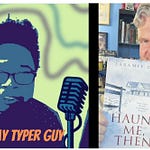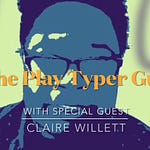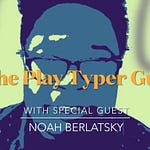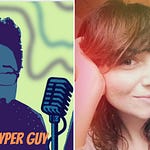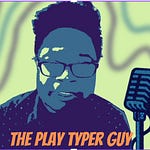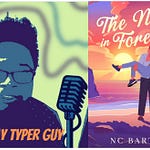Joining me today is my friend Lisa Tolin, author of the fiction and nonfiction for children. Her latest work is the picture book, Can You Imagine? The Art and Life of Yoko Ono.
Lisa and I go way back. We met in New York when I worked at SPY and she worked at another magazine in the same office. She was a student at Barnard College at the time, and I lived not far away in Morningside Heights so we often hung out at Tom’s Diner and the Hungarian Pastry Shop. I’ve been quite impressed with her success over the years. She’s worked at the Associated Press and was Head of Special Projects for TODAY Digital. She’s now Editorial Director at PEN America.
In 2005, Lisa interviewed Yoko Ono at her home in the Dakota apartment building (famous for its appearance in Rosemary’s Baby but unfortunately also for John Lennon’s tragic shooting death outside in 1980).
It was a delight to catch up with Lisa and discuss her book, which you can purchase at the usual online locations but I highly recommend visiting your local bookstore for this one. Portland, Oregon, artist Yas Imamura is a perfect match for Lisa’s moving prose.
Edited excerpts from our conversation below:
SER: Can you tell me a bit about the artist you worked with? Your prose is amazing in this, but [the art]just looks beautiful. I was just kind of blown away
LISA: It’s illustrated by Yaz Imamura, who is a super talented artist out, I think, your way in Portland. The usual process for picture books is that you sell the manuscript to a publisher and then the publisher finds the right illustrator for the project.
So she really took the words and ran with it, which is such a cool experience because you get to kind of set it free and then it comes back to you in this very physical form and the way she interpreted the words are not necessarily what I expected. I think the work is so beautiful, I want to hang it all around my house. It’s really quite stunning and she found themes that I hadn’t mentioned in the text that she pulled out.
It’s Yoko Ono’s life, so we had to deal with some pretty dark material. First of all, the hatred that she faced through all parts of her life, and then obviously the assassination of her husband. That's pretty tough stuff to do in a children’s picture book, but I think she found incredibly beautiful and poignant ways to do it.
SER: Yoko Ono is such a tremendous figure, someone who I think there’s no American or obviously a person in England who doesn’t have an opinion. You interviewed her about 20 years ago, if I recall, which was 2005. I remember being very impressed that you’d met Yoko Ono, but as a big fan of Rosemary’s Baby, you were in the Dakota. Could you tell us about that experience, both meeting her and also going to this historic building and home?
LISA: No demon babies on this particular occasion. I really lucked out there. It’s kind of a fortress of a building. You go in these gates and there’s a sign in desk.
I think they have different elevators for different parts of the building. So just going in and seeing the apartment and seeing thee white room. I don’t think it’s the white room where they filmed the “Imagine” video because I think that was in England but it was a white room with the white piano and if you know the history, it’s all right there in front of you. It’s really amazing to be in that space and then I met her and I grew up like a lot of people probably hearing her story from the Beatles’ perspective — not necessarily a flattering portrait. I met her and I was just kind of blown away by her presence. She was just this amazing … intelligent, thoughtful person. I feel silly, but my first thought was “of course, he loved her.” I can see her her massive presence and charisma and intelligence. I had that feeling that she wasn’t the person who I thought she was kind of instantly.
SER: This is relevant now in what we saw playing out in similar ways with Prince Harry and Meghan Markle, this idea of the intruder, often a woman of color, coming in and blowing up the system. Obviously, there are theories about why certain women are treated this way. What appealed to me about this book was that it’s not so much about justifying her point of view or her life. She is an incredible person in her own right. Even if she had never met the Beatles, her life is quite compelling. It’s all in this book and beautifully done, but can you tell people a bit about just her life?
LISA: I don’t think a lot of people know that she’s a survivor of the firebombing of Tokyo, that she fled with her family to the countryside. She came from a very privileged background, but there were expectations of a girl in Japan at that time in that social class.
She obviously really rebelled against all of those expectations and continued to do that throughout her life.
People were dismissive of the art she was making at times … and I was so fascinated by how she was able to just kind of keep being herself through all that because I don’t know .. I’m a people pleaser. I find it hard when someone looks at me sideways. So for somebody to kind of endure all of that hatred after she met John Lennon and still keep going was remarkable, is remarkable.
She was really, as you say, a compelling artist in her own right. She had conceptual art that was really, I think, ahead of its time and groundbreaking. She’s finally kind of getting her due as an artist. She’s got pieces at the MoMA and she just had a huge exhibit at the Tate London.
John Lennon called her the world's most famous artist who nobody knows. She became famous because of her connection to the Beatles, but she made art that was worth knowing fully separate from their relationship.







